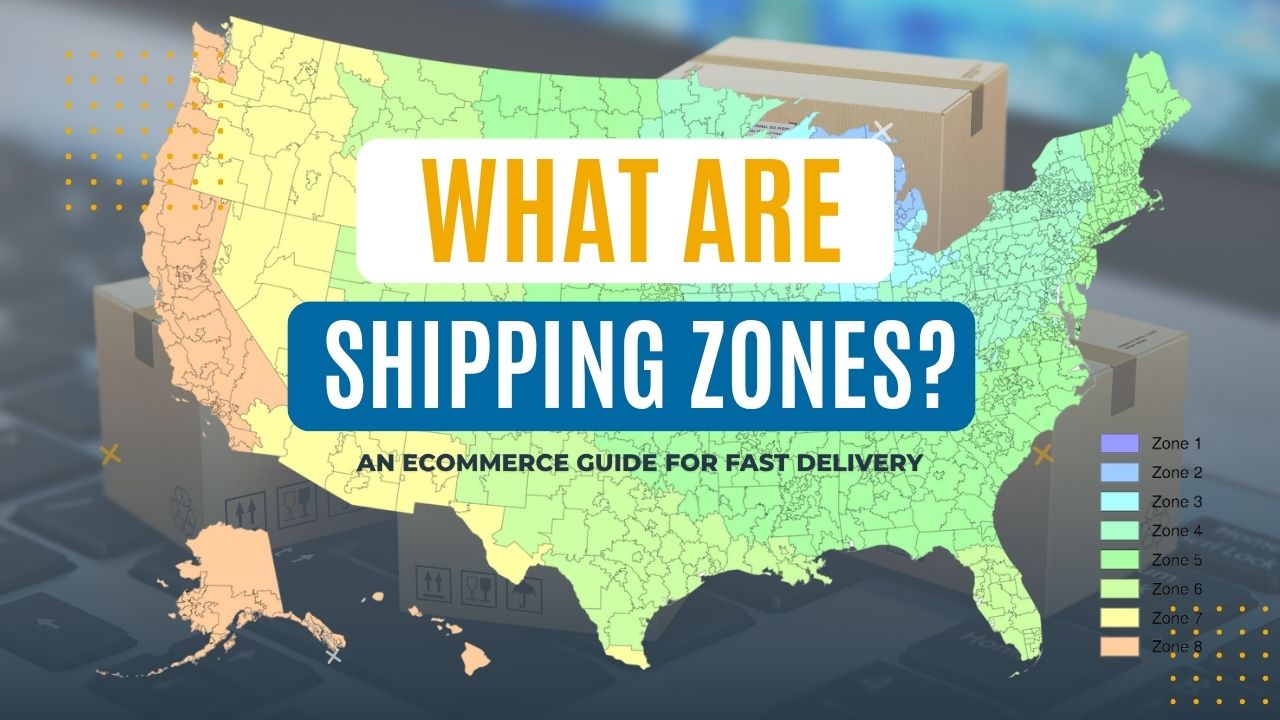
What Are Shipping Zones?
Shipping zones are distance-based regions that carriers (like UPS, FedEx, and USPS) use to price and schedule deliveries. In the U.S., domestic zones typically run from Zone 1 (local deliveries) up to Zone 8 (coast-to-coast). For example, UPS/FedEx defines Zone 1 as up to 50 miles from the origin and Zone 8 as 1801+ miles. (See table below.) The higher the zone number, the farther the shipment travels. Each zone also usually means a higher price and longer transit time, because more distance requires more fuel, labor, and handling.
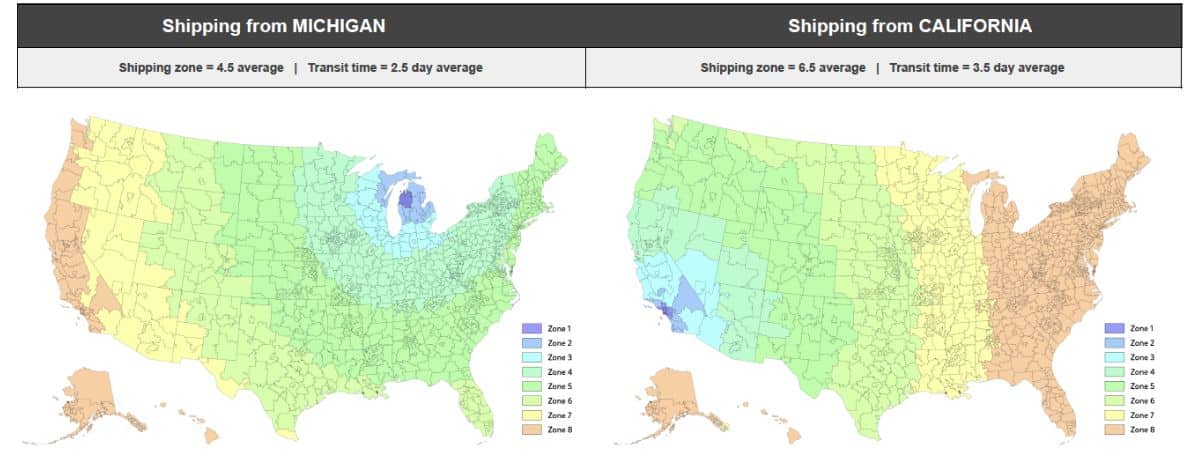
|
Zone |
Distance from origin |
|
1 (local) |
0–50 miles |
|
2 |
51–150 miles |
|
3 |
151–300 miles |
|
4 |
301–600 miles |
|
5 |
601–1000 miles |
|
6 |
1001–1400 miles |
|
7 |
1401–1800 miles |
|
8 |
1801+ miles |
Table: Typical shipping zones and their distance ranges (contiguous U.S.).
Because shipping zones are tied to distance, they have a direct impact on delivery speed and cost:
Delivery Speed:
Packages sent to nearby zones (like Zone 1–2) usually arrive in fewer days than those sent to far-away zones (Zone 7–8).
For example, a parcel to Zone 1 or 2 “almost always” arrives faster than one to Zone 7–8.
In practice, an order shipped cross-country (e.g. New Jersey ➔ Oregon) from a warehouse can take 5–6 days by ground. Today’s shoppers demand quick delivery – on average under 4 days – so long routes through high zones risk losing customers to faster competitors.
Shipping Cost:
Carriers charge more for higher zones. For instance, a 5-lb FedEx Ground package costs $11.98 to Zone 2 but $18.42 to Zone 8 – over 50% more. These per-package differences add up with volume. In short, shipments crossing more zones incur higher fees; keeping zones low is key to minimizing freight charges.
|
Destination Zone |
FedEx Ground (5 lb) rate |
|
Zone 2 |
$11.98 |
|
Zone 5 |
$15.85 |
|
Zone 8 |
$18.42 |
Table: Example shipping costs for a 5-lb package by zone (higher zones cost more).
Why These Zones Matter:
Every extra zone adds both days and dollars. If many orders go to far zones, total shipping spend rises and transit slows. Carriers even apply surcharges (like fuel fees) based on distance. Thus, companies often strategize their fulfillment to minimize high-zone shipments.
For example, breaking a far-away shipment into shorter hops or using regional carriers can help. In practice, however, splitting inventory into multiple warehouses is one common tactic to cut zone costs – but it introduces its own trade-offs (see below).
Shipping Zones and 3PL Logistics

Third-party logistics providers (3PLs) play a key role in managing zone challenges. A 3PL often operates its own network of fulfillment centers and has volume discounts with carriers, so it can ship more efficiently than an individual seller. A 3PL’s network lets a seller reduce shipping zones without physically spreading inventory everywhere.
3PLs also invest in advanced technology and negotiate bulk rates that most small sellers can’t get alone. By aggregating many clients’ shipments, a 3PL can push carriers for lower zone-based rates. They also provide integrated fulfillment software that automatically routes each order to the optimal warehouse (or even bundles multiple packages) to minimize zones.
In short, partnering with a 3PL usually lowers your cost per order and speeds up delivery more than you could achieve in-house.
- Bulk discounts: 3PLs leverage high volume to negotiate lower carrier rates.
- Strategic locations: Many 3PLs, like eFulfillment Service, have a centralized warehouse location to reach many areas of the U.S. within an average of 2 days or less.
- Tech & expertise: 3PLs handle zone calculations, shipping-label selection, and routing, freeing you from that complexity.
(For example, eFulfillment Service has a fulfillment center and systems designed to cut through zones – letting you serve more customers quickly without having to set up your own nationwide network.)
Single vs Multiple Warehouses: Cost and Complexity of Shipping Zones
A major decision for any online seller is whether to use a single warehouse or multiple warehouses. It’s often assumed more locations automatically mean faster delivery because of shipping zone coverage and lower shipping bills (an idea many third party logistics centers promote).
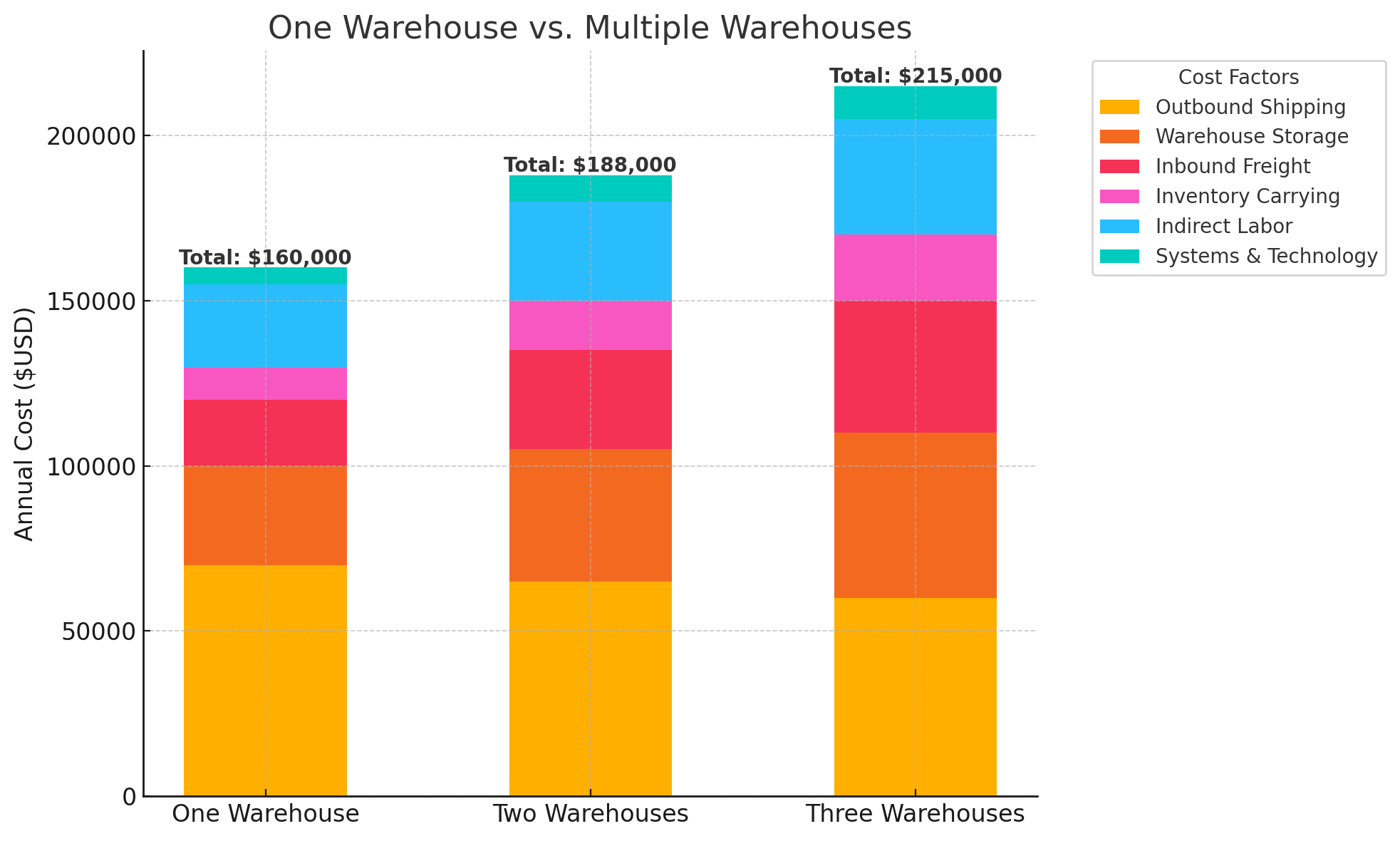
But the reality is more nuanced. Our internal study “The Real Cost of Splitting Inventory” found that multiple facilities do lower average parcel zone and outbound costs (roughly 10% savings with two warehouses, 25–30% with three). However, these shipping savings aren’t free. A multi-warehouse setup adds many hidden costs and complexities:
- Inbound & Transfer Shipping: With one warehouse, suppliers ship inbound freight to a single destination. Multiple locations mean shipping raw inventory into each warehouse (e.g. split containers to East and West coast), raising your inbound shipping costs. Plus, if one warehouse needs more of an item, you must transfer inventory between sites (incurring extra freight and labor) – a cost absent in a single-warehouse model.
- Higher Storage Fees: Each warehouse incurs separate rent, utilities, and minimum fees. Splitting stock also means keeping safety stock everywhere. For example, a slow-moving SKU that needs 1 pallet in one warehouse would require 3 pallets in three warehouses to maintain service. As the study notes: “you just tripled your inventory and carrying charges for that one item” by splitting it. More inventory sitting idle means more money tied up (and higher costs for insurance, taxes, and obsolescence). In one modeled scenario, just moving from one 1,000 cu ft site ($0.75/cu ft) to two 750 cu ft sites ($0.85/cu ft each) raised monthly storage from $750 to $1,275 – a 70% increase.
- Labor and Management Overhead: Each warehouse needs staff and oversight. A second facility often requires a second receiving team, picker/packer shifts, site managers, etc. This duplication reduces efficiency: smaller sites may not achieve the same productivity as one large hub. One analysis found that unless you ship millions of dollars in orders, “multiple sites can lead to reduced efficiency” due to underused labor. The extra facilities also impose management tasks: negotiating leases, setting up layouts, training staff, coordinating inbound carriers – all of which consume time and money.
- Technology Complexity: Running multiple warehouses requires more advanced inventory and order-management software. You’ll need systems that decide which warehouse fulfills each order in real time, and that keep stock levels synced to prevent overselling. Upgrading to a multi-location WMS or integrating several systems can be a significant cost and technical challenge.
- Stockouts & Transfers: Paradoxically, splitting inventory can increase the risk of stockouts for individual warehouses. If one location sells out of an item suddenly, it could be sold out even while another warehouse still has it. Avoiding this might require holding extra buffer stock at each site, further raising inventory levels. Alternatively, a “just-in-time” fix like expediting from the distant warehouse or trucking inventory over adds last-minute premium fees. By contrast, a single warehouse pools inventory nationally – making stockouts rarer for the same total units.
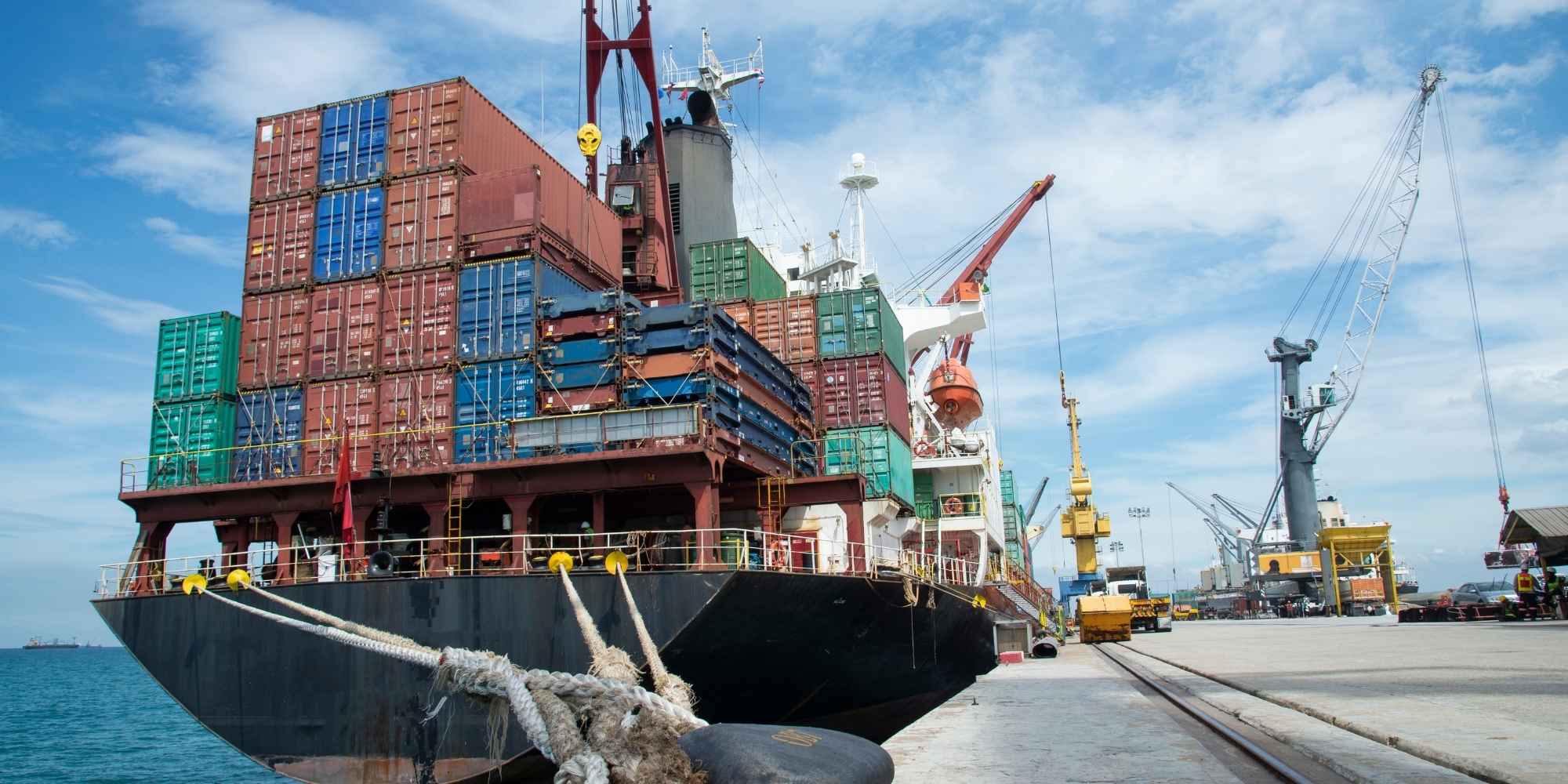
These hidden costs add up. As our study concluded, “the sum of these hidden costs can erode or even outweigh the shipping savings from multiple fulfillment centers.” In fact, many smaller eCommerce businesses ultimately find that adding warehouses raises their overall fulfillment costs.
For example, in a modeled scenario of a mid-sized seller (1,000 orders/month), using two warehouses saved only about 10% on shipping but added roughly 25% more total cost in storage, labor, and software – roughly $48K extra per year. (See table below.)
The net effect: faster delivery for some orders, but much higher overhead overall. The takeaway is clear: don’t assume more warehouses automatically mean lower cost – always run the numbers for your own volumes and customer locations.
|
Cost Category |
1 Warehouse (annual) |
2 Warehouses (annual) |
|
Outbound shipping |
~$70,000 (baseline) |
~$63,000 (~10% savings) |
|
Storage (rent/space) |
~$30,000 |
~$40,000 (+33%) |
|
Inbound freight |
~$20,000 |
~$35,000 (+75%) |
|
Inventory carrying |
~$10,000 |
~$15,000 (+50%) |
|
Labor & operations |
~$25,000 |
~$40,000 (+60%) |
|
Systems/tech (WMS) |
~$5,000 |
~$8,000 (+60%) |
|
Total |
$160,000 |
$201,000 (+26%) |
Table: Example cost breakdown for a seller using one vs. two warehouses (hypothetical figures from internal analysis). Two facilities saved ~$7K on shipping but added ~$48K in other costs, raising total spending by ~25%.
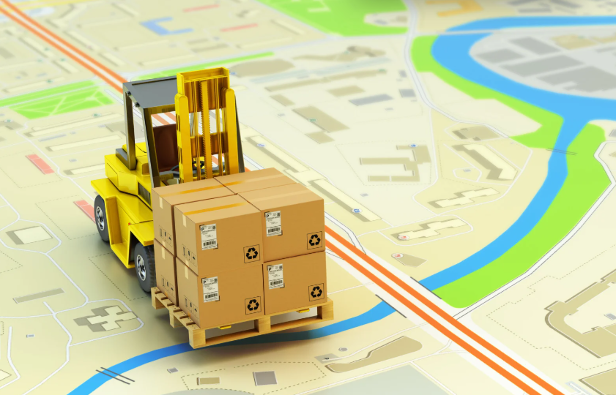
When Multiple Warehouses Make Sense
Multiple warehouses can be beneficial—but usually only under specific conditions.
In our case studies, the businesses that saw success with multi-warehouse fulfillment were:
-
High-volume sellers, and
-
Had a large concentration of orders in distant zones (like Zones 7–8).
Example: A Regional Expansion That Paid Off
One online retailer based in Vermont faced high shipping costs due to many orders going to the West Coast. To address this, they:
-
Opened a second warehouse in Atlanta (Zone 2–4 for many Southeast customers),
-
Shifted a large portion of orders away from high-cost zones,
-
And significantly reduced average shipping costs.
In this case, the savings eventually offset the cost of running the second warehouse.

But It’s Not Always Worth It
For most small to mid-sized businesses, especially those with:
-
Broadly distributed customers,
-
Modest daily order volumes,
-
Or a large number of SKUs,
…splitting inventory across multiple warehouses can introduce more problems than it solves.
Our study found that for these types of businesses, multiple warehouses often lead to:
-
Higher inventory costs (due to duplicated stock),
-
Increased inbound shipping and transfer fees,
-
And reduced operational efficiency.
Managing Shipping Zones doesn’t have to be a hassle.
Partnering with a 3PL like eFulfillment Service means you can focus on growing your business while we handle the details. Request a Free Quote Today!
A Single Warehouse Still Works for Many
A national sports retailer found that a single, optimized warehouse was the right solution for their business. They:
-
Promised 3–5 day delivery instead of overnight,
-
Kept all inventory centralized,
-
And avoided complications from stockouts or SKU allocation issues.
For many DTC brands and Amazon sellers expanding beyond FBA, a single or limited-hub strategy often offers:
-
Lower costs,
-
Simpler operations,
-
And sufficient delivery speed for customer expectations.
Lower Your Shipping Costs with Smarter Fulfillment.
Partner with eFulfillment Service to move inventory faster and free up cash flow. We help Start-Ups optimize operations so products don’t sit on shelves. Request a Free Quote today!
Summary & Key Takeaways:
Shipping zones are a critical factor in eCommerce logistics. Keeping orders in lower zones speeds up delivery and cuts costs, which is why many sellers consider multiple warehouses or a 3PL with multiple hubs. However, our analysis shows that hidden fees and complexity can quickly offset the zone savings of a multi-warehouse network. In short:
- Single Warehouse: Easier to manage and often cheaper for small-to-moderate volume (inventory pooling, fewer overheads, simpler IT). Slightly longer shipping to distant customers.
- Multiple Warehouses: Can shorten transit and reduce per-package shipping cost (up to ~30% savings with 3+ sites), but only if volumes justify it. Comes with higher inbound freight, storage, labor, and tech costs.
3PLs can help blend the best of both worlds: for example, eFulfillment Service’s warehousing network can reach most customers quickly while handling the inventory, software, and carrier negotiations in the background. By analyzing your sales data and zones, a 3PL can often achieve fast delivery times without you needing dozens of warehouses.
If you’re an eCommerce seller weighing these options, we encourage you to crunch the numbers. Consider your order volume, customer locations, and product mix carefully. And remember: strategic partners and modern fulfillment techniques (like zone skipping, regional carriers, and consolidated shipping) can greatly ease the load.
Ready to optimize your shipping strategy? Contact eFulfillment Service today to learn how our fulfillment solutions can simplify zones, cut costs, and speed up delivery for your business.
Ready to talk shipping solutions? The team at eFulfillment Service is happy to help answer questions and set you up for fulfillment success. Here’s to fewer headaches and more growth ahead!




0 Comments